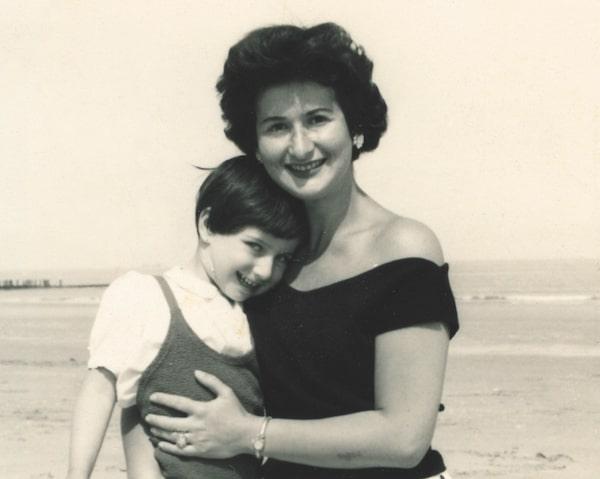My Mother Laughs was first published in Chantal Ackerman’s native French in 2013. This year it has been translated into English for the first time, twice. Silver Press’ elegant version is framed by a foreword by the poet, Eileen Myles (who also has a poem on the back flyleaf) and an afterword by the academic, Frances Morgan. These women’s voices are sympathetic, and naturally turn the book as a whole into a kind of conversation.
The book, which loosely records the decline of Ackerman’s mother, reads like a diary or monologue, its confessions interspersed with family photos and stills from her films. It is immensely personal, even, in places, damning. Ackerman attempts to reject her own words in the first sentence: “I wrote it all down and now I don’t like what I’ve written.” She is the friend who hates herself, and no matter what you say, cannot stop doing so. At other times it is a dialogue, as when her mother creeps in without the boundary of quotation marks. This intensifies the sense that she and her mother are too close, too umbilically linked. Ackerman admits to her uncle “if my mother hadn’t always stroked me and held me tight against her body things might have turned out differently”. She is infantalised, or she infantalises herself. In her mother’s home, this childishness is emphasised and she imagines sticking her finger in the sauce at her mother’s local restaurant.
 In the relationships between life and death, laughter and tears, Ackerman and her mother, the book is full of warring opposites which gain ground from each other only to cede it again. Smaller but no less significant instances emerge. Ackerman’s most recent romance, with her girlfriend C, is subtly compared to her prior, deeper, connection with L. Ackerman also sets herself against her sister. Of herself, she states, “I don’t have a life. I never learned how to make one for myself”. Of her sister, “[She] has a life. And she knows about its pleasures”. The repetition is deliberate. In a fight between Ackerman and C, C rams a table into her stomach fifteen times and punches her in the face. This shocking act of violence results in two black eyes for Ackerman. Yet just beforehand she described C’s “little black eyes” as “closed”. With dark humour, her sister later comments “Just look at yourself with that black eye”. Then Ackerman swerves. She considers what could have been done differently, and recalls buying a sofa in a shop where C’s “little brown eyes had darted around”.
In the relationships between life and death, laughter and tears, Ackerman and her mother, the book is full of warring opposites which gain ground from each other only to cede it again. Smaller but no less significant instances emerge. Ackerman’s most recent romance, with her girlfriend C, is subtly compared to her prior, deeper, connection with L. Ackerman also sets herself against her sister. Of herself, she states, “I don’t have a life. I never learned how to make one for myself”. Of her sister, “[She] has a life. And she knows about its pleasures”. The repetition is deliberate. In a fight between Ackerman and C, C rams a table into her stomach fifteen times and punches her in the face. This shocking act of violence results in two black eyes for Ackerman. Yet just beforehand she described C’s “little black eyes” as “closed”. With dark humour, her sister later comments “Just look at yourself with that black eye”. Then Ackerman swerves. She considers what could have been done differently, and recalls buying a sofa in a shop where C’s “little brown eyes had darted around”.
It’s easy to trip on this repetition, or realise two paragraphs later that the subject has shifted, into something similar but very much not the same. For example, when Ackerman talks about the death of C’s mother, she slides without warning into the suicide of L’s brother. Free-association makes sense to Ackerman, but causes the reader to double back, to question their assumptions.
There is a despairing inevitability to the book. Self-flagellation runs throughout. Two years after its publication, a year after her mother’s death, Ackerman committed suicide. She writes of her depression in My Mother Laughs, briefly dwelling on hospitalisation and medication. Towards the end she admits that “I’ve often wanted to kill myself. But I told myself, I couldn’t do that to my mother. Afterwards, when she’s not around”. Ackerman concludes on a seeming high note, with M: “Even our shadows are in love when we walk”; but this happy ending rings false. She knows, we know. Although the book is an elegy for her mother, it is Ackerman’s own obituary.
- My Mother Laughs by Chantal Ackerman published by Silver Press £13.99, paperback
- Read more book reviews on theartsdesk















Add comment